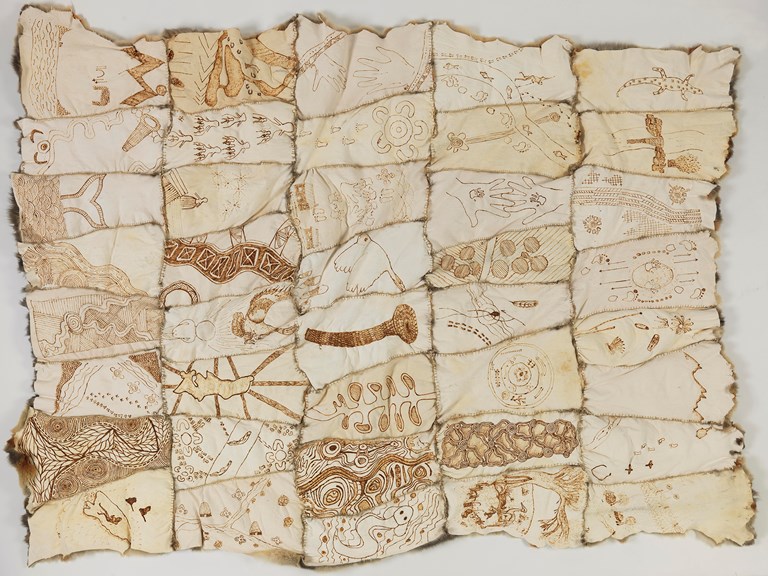Reading the possum skin cloak
Suitable for Year Levels 3–9
Listen to Di Di Vaha’akolo talking about possum skin cloaks.
What questions would you like to ask Di-Di about possum skin cloaks?
How to read a possum skin cloak
Watch and Listen
Think and Write
- Why is the possum skin cloak an important cultural object?
- What is the community doing to keep this tradition alive?
- How do they decide what images to put on their possum skin cloak?
- What skills are they trying to keep alive? How are they doing that? Why are they doing that?
The Yorta Yorta Possum Skin Cloak
Watch and Listen
Think and Write
- Why is the river important to Yorta People?
- How is this cloak a map of country?
- How do the elders feel about this cloak?
- How are they connected to their culture?
The Lake Condah Possum Skin Cloak
Watch and Listen
Think and Write
- What do you learn about Gunditjmara people from this video?
- How do they describe their country?
- How is that reflected in the designs on the cloak?
- How do they use this cloak to maintain and preserve culture?
Feel and reflect
- How do these stories about possum skin cloaks make you feel about your connection to your culture?
- What things do you want to preserve from your ancestors?
- How would you represent your life if you were designing a cloak?
Design your own cultural cloak
Create and make
- What’s it made from?
- How big is it?
- What colour and design would you use?
- What symbols will you choose to represent your life and culture?
Victorian Curriculum Links
History
Level 3–4
- Identify and describe continuity and change over time in the local community, region or state and as a result of the effects of European exploration (VCHHC069)
- Identify and explain the causes and effects of European settlement anexploration (VCHHC070)
- The diversity and longevity of Australia’s first peoples and the significant ways Aboriginal and Torres Strait Islander peoples are connected to Country and Place (land, sea, waterways and skies) and the effects on their daily lives (VCHHK078)
Level 5–6
- Identify and describe patterns of continuity and change in daily life for Aboriginal and Torres Strait Islander peoples, ‘native born’ and migrants in the Australian colonies (VCHHC085)
- Explain the causes of significant events that shaped the Australian colonies, contributed to Australian Federation and the effects of these on Aboriginal and Torres Strait Islander peoples and migrants (VCHHC086)
- The different experiences and perspectives of Australian democracy and citizenship, including the status and rights of Aboriginal and Torres Strait Islander peoples, migrants, women, and children (VCHHK094)
